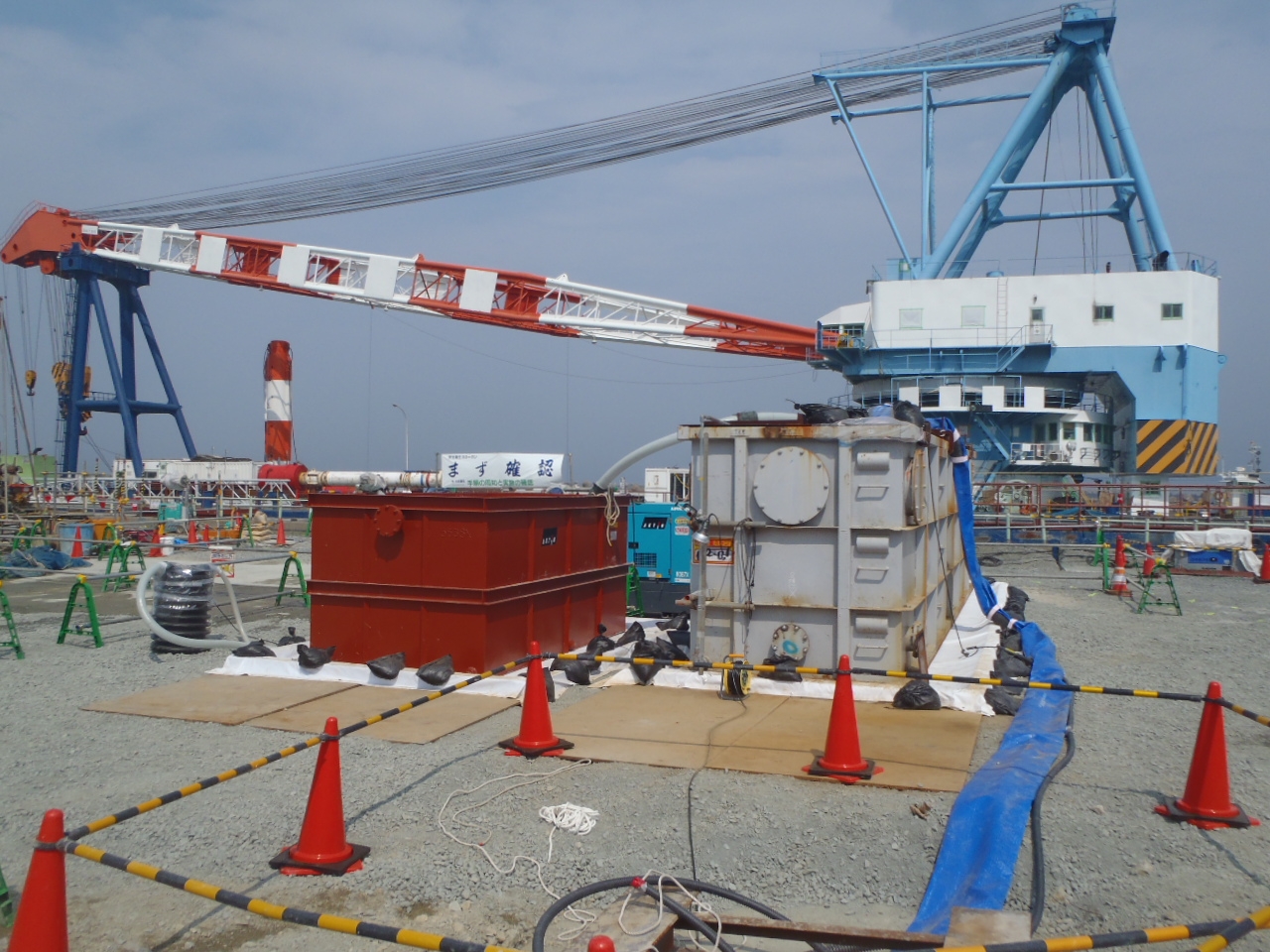Assuming the same pace throughout the 24-hour period, it would be only 52 tonnes of water - about half of much publicized 100 tonnes per well per day, totaling "300 tonnes of contaminated water" assumption by METI.
From TEPCO's English press release, from the Japanese email alert for the press, 8/9/2013:
Status of Pumping up Groundwater from the Water Collection Pit at the East Side of the Unit 1, 2 Turbine Building in Fukushima Daiichi Nuclear Power Station
At 2:10 PM today (on August 9), groundwater was pumped up from the water collection pit (south) installed at the east side of the Unit 1, 2 Turbine Building and transferred to Unit 2 vertical shaft C.
Amount of groundwater pumping up from the water collection pit as of 8:00 PM today (on August 9) is approx. 13m3. Of those, approx. 3m3 are transferring to the vertical shaft C.
So, TEPCO is pumping up the groundwater in the embankment area to dump it back in Shaft C, where the highly contaminated water from April 2011 has been sitting. TEPCO's representative at yesterday's meeting of Nuclear Regulatory Authority's working group on dealing with contaminated water at the plant was saying the operation would be useful in diluting the density of radioactive materials in the highly contaminated water.
Uh...
Here's the pit that became operational (from TEPCO's Photos and Videos Library, 8/9/2013):
Groundwater is pumped up by the suction pump (small black thing on the left), then transferred to the filtration tank (red tank in the middle), then to the gray water tank. Then it will be transported to Shaft C in the flexible blue tube you see coming out of the gray tank.




 Tokyo Time
Tokyo Time
![[Most Recent Quotes from www.kitco.com]](http://www.kitconet.com/charts/metals/gold/t24_au_en_usoz_2.gif)


5 comments:
So, is diluting the water in shaft C for the purpose of making it a bit easier to finally remove that water altogether or is it just a (temporary) way around saying, "we have no good idea what to do with the water we pump up?"
*mscharisma*
TEPCO must be doing this for show. If they did any serious pumping, all hell would break loose. How about a mix of freshwater, sea water and radioactive water coming up from the well. All that equipment will become contaminated and be treated like nuclear waste.
Is Shaft C watertight or are they making a loop to filter the radioactive water?
More water in the shaft will make it leak / over flow quicker to the ocean and that is exactly what they are hoping for. You do not have to clean it, saves money. This deluting story is just to let you believe it's good or so, but as always with Tepco, it's not explained why it is so good.
I watched part of NRA's working group meeting on this very issue, with TEPCO representatives present. Commissioner Fuketa's face was contorted as he tried to comprehend what TEPCO was saying about moving the pumped water into Shaft C. His face got further contorted when TEPCO said they chose the location to seal the connection between the turbine building and the trenches using "freeze" method, because the location has the least area to freeze.
TEPCO was full of half-brained plans which they presented to NRA as given (no doubt coming from Energy Agency).
mscharisma, it is probably the former, as it is just too radioactive for workers to go anywhere near, as is.
TEPCO sometimes gives the impression of having virtual spokespeople, who do not remain in existence unless their pronouncements materialize in fact.
In this instance, the idea of diluting contaminated material so there will be more of it to treat really does cross a threshold of stupidity.
Is it too much to hope that the VP of Corporate Communications who blessed this particular piece of lunacy be transferred to some less demanding post?
Post a Comment